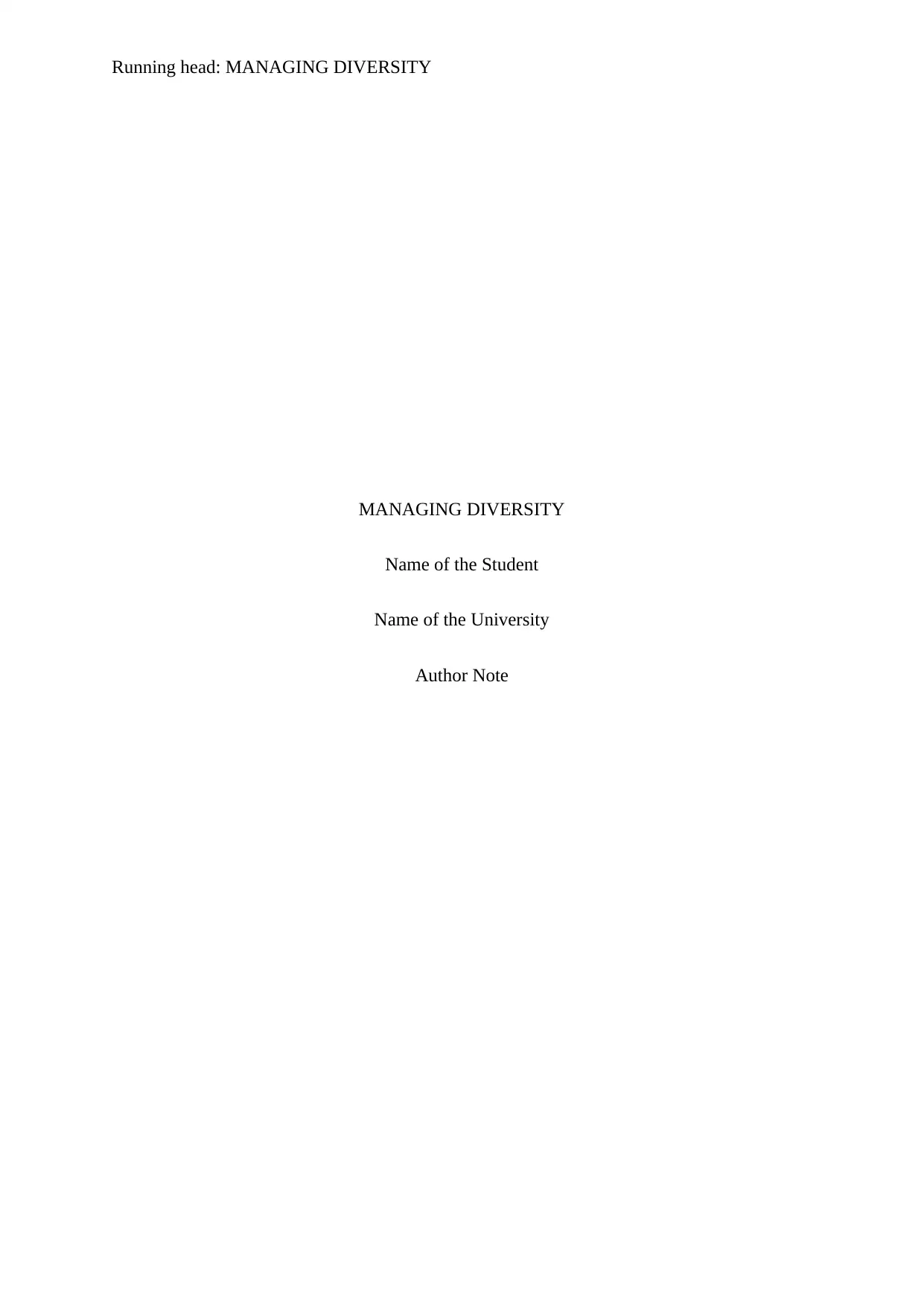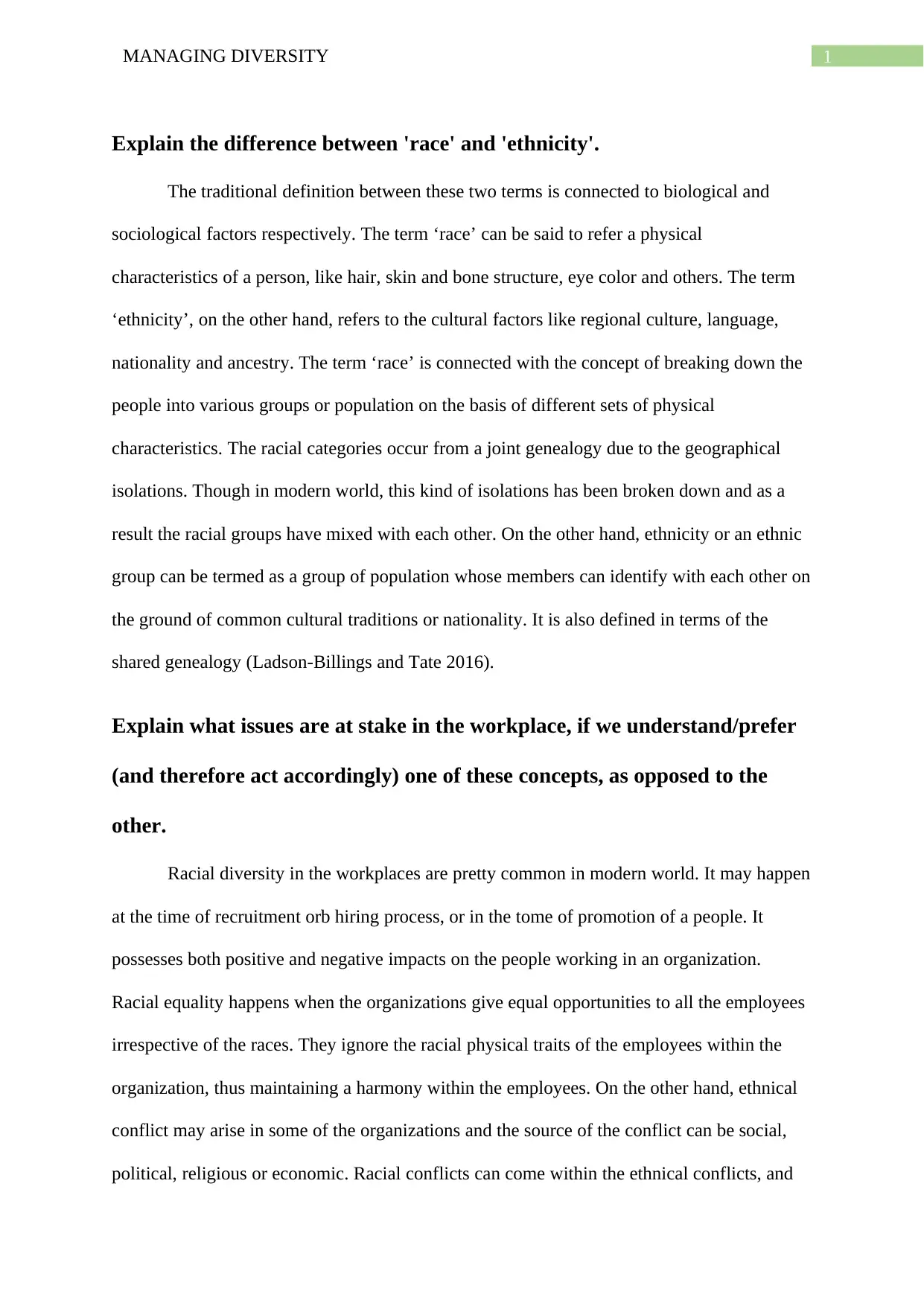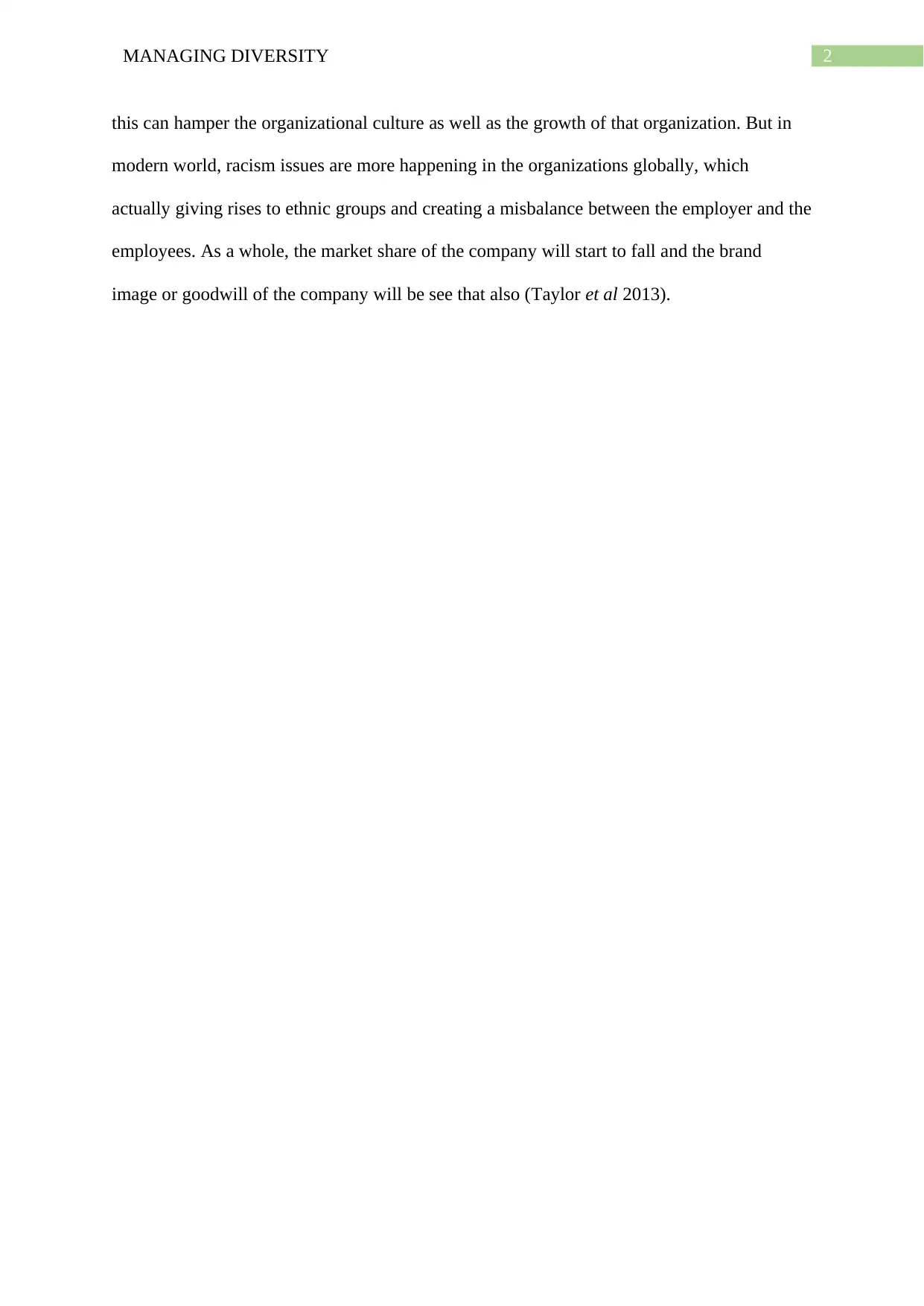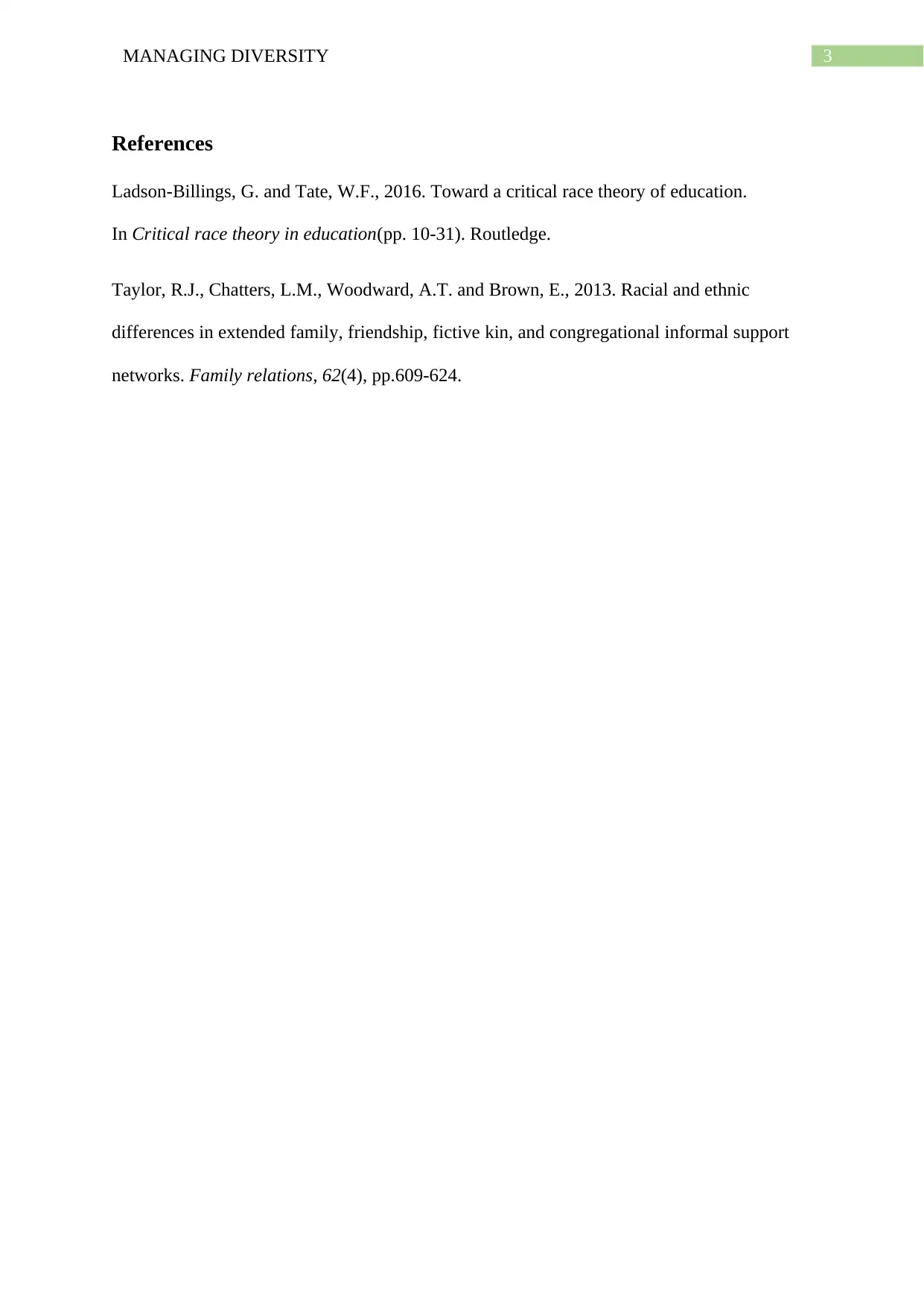Diversity Management: Race vs. Ethnicity and Workplace Impact Analysis
VerifiedAdded on 2023/01/18
|4
|548
|79
Report
AI Summary
This report delves into the critical distinctions between 'race' and 'ethnicity,' exploring their definitions and implications within the context of the workplace. It highlights that 'race' is often linked to physical characteristics, while 'ethnicity' encompasses cultural factors. The report examines the impact of these concepts on workplace dynamics, including the potential for racial equality and the risks of ethnic conflicts. It further discusses the consequences of prioritizing one concept over the other, potentially leading to issues in hiring, promotion, and overall organizational culture. The analysis emphasizes the importance of understanding and managing diversity to foster a harmonious and productive work environment, referencing academic sources such as Ladson-Billings and Tate (2016) and Taylor et al (2013) to support its arguments.
1 out of 4










![[object Object]](/_next/static/media/star-bottom.7253800d.svg)